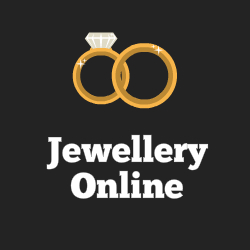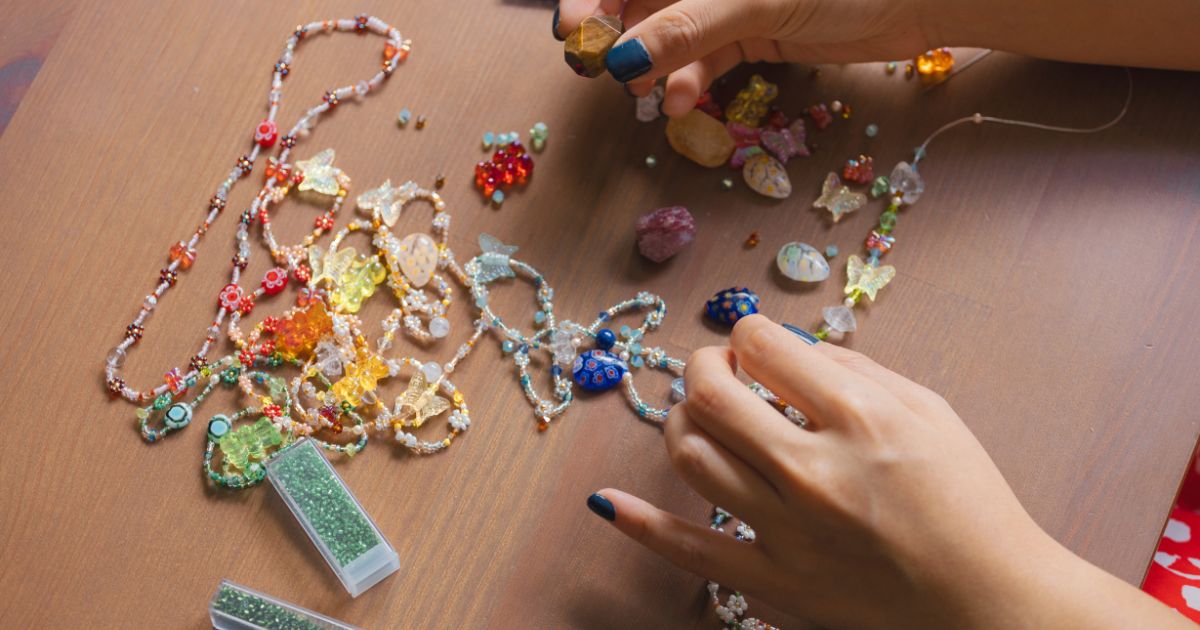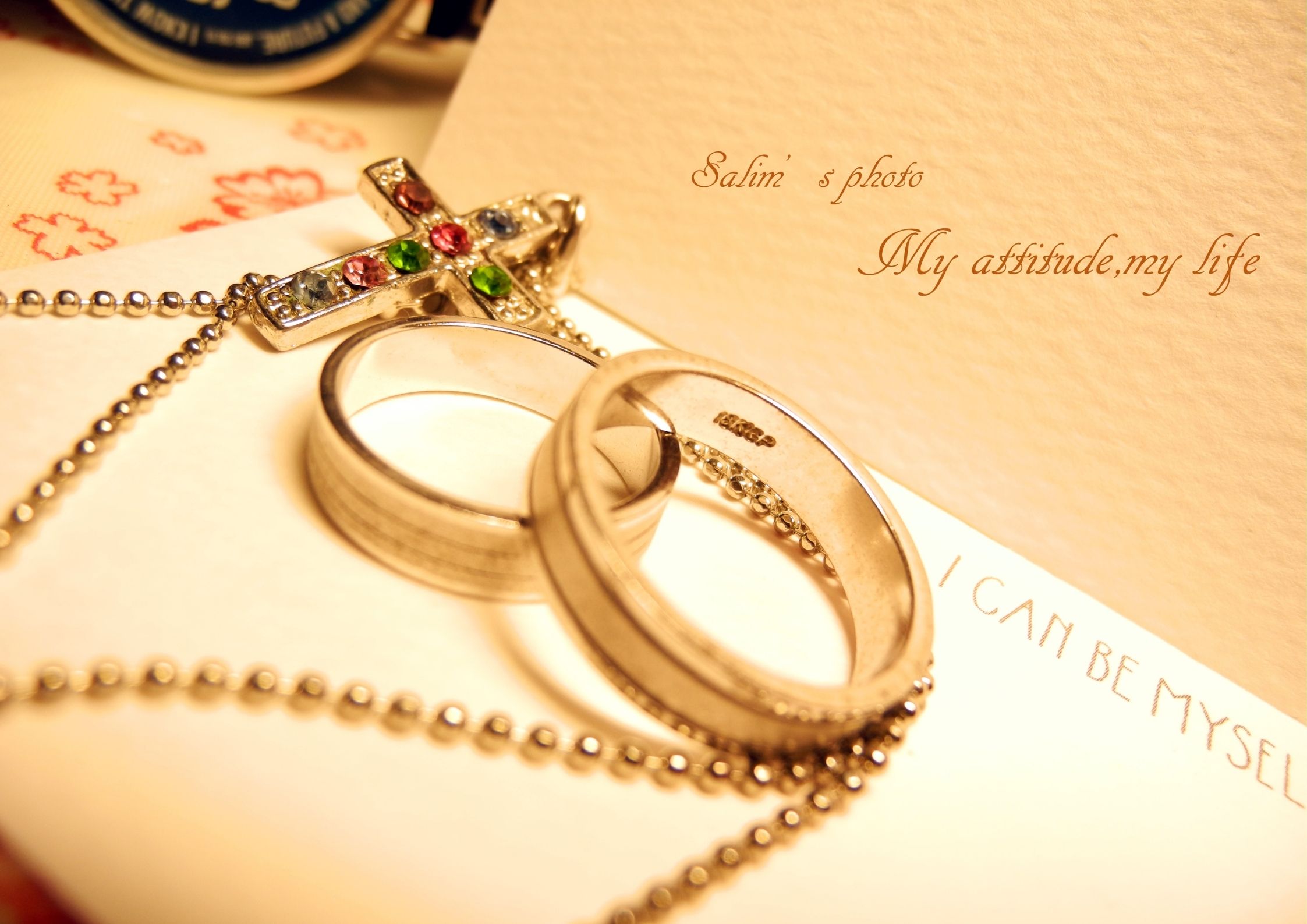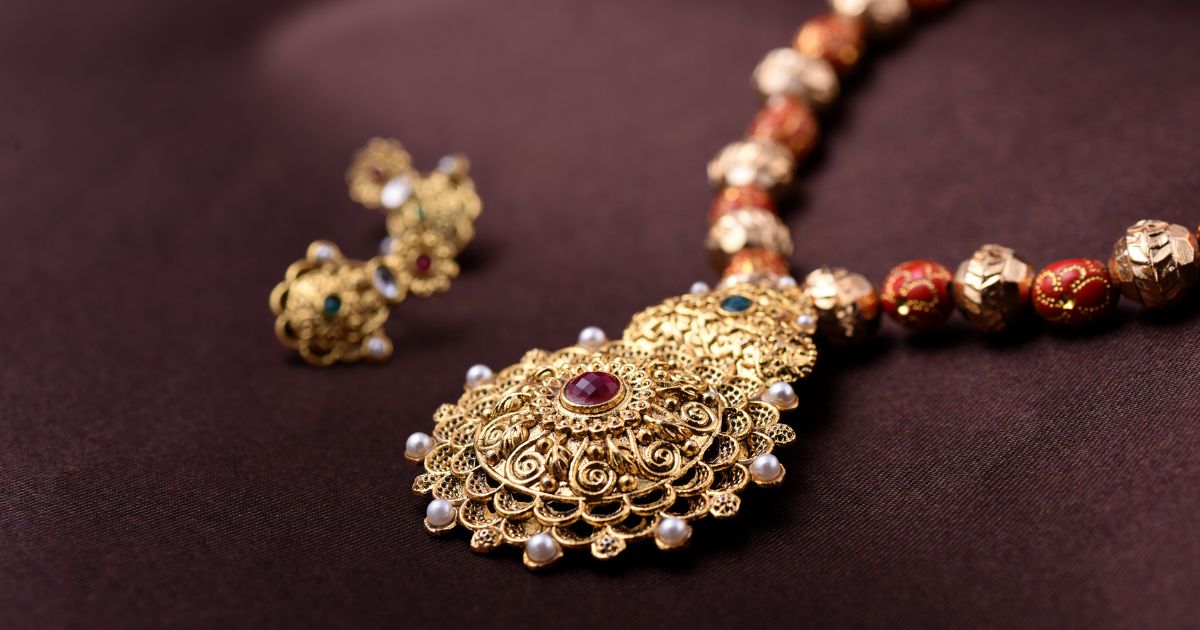- Key Takeaways
- Crafting a Career in Jewellery Design
- Job Roles and Responsibilities
- Mastering Essential Skills for Success
- Navigating the Workplace Environment
- Qualifications and Advancement
- Exploring Employment Opportunities
- The Future of Jewellery Design Jobs
- Building Experience through Internships
- Financial Aspects of Jewellery Design Careers
- Conclusion
- Frequently Asked Questions
Key Takeaways
- Pursuing a career in jewellery design requires a combination of creativity, technical skills, and business acumen.
- To succeed in the field, aspiring jewellery designers should focus on honing their skills in sketching, CAD software, and knowledge of gemstones and metals.
- Building a strong portfolio and networking within the industry are crucial steps for gaining employment opportunities in jewellery design.
- Stay updated on the latest trends and technologies in the jewellery industry to remain competitive and adaptable to changes.
- Consider seeking internships or apprenticeships to gain practical experience and insight into the business aspects of jewellery design.
- Understanding the financial aspects of the industry, including pricing, production costs, and market trends, is essential for a successful career in jewellery design.
Are you passionate about creativity and design? Curious about a career in jewelry design? This blog post will guide jewellery designing professionals through the diverse pathways, essential skills, specializations, and workplace dynamics within the captivating world of jewellery design. Discover the exciting opportunities in a jewellery designer career and learn how to get started with a jewellery designing course to enhance your skills in jewellery making.
From traditional artisan techniques to cutting-edge technology, there are numerous exciting opportunities awaiting jewellery designing professionals. Whether you’re interested in taking a jewellery designing course or diving straight into the world of jewellery making, the field offers endless possibilities. With skills ranging from welding to intricate craftsmanship, this industry is perfect for those passionate about creating stunning pieces of jewellery.
Whether your interest lies in a jewellery designer career, crafting bespoke pieces or contributing to mass-produced collections, understanding the essential skills required for jewellery making and various job specializations can help pave your way into this dynamic industry.
Explore the diverse opportunities available in jewellery design jobs and learn from experienced jewellery designing professionals. Moreover, gaining insights into the unique workplace dynamics specific to jewellery designing can provide valuable foresight for your career journey as a jewellery designer. So let’s delve deeper into the multifaceted realm of career opportunities within jewellery designing, a profession that involves jewellery making and requires the skills of a jewellery designer.
Crafting a Career in Jewellery Design
Eligibility Criteria
To pursue a profession as a jewellery designer, one typically needs a high school diploma or equivalent. Designers in this field work with metals and invest their time in creating unique pieces. Some jewellery design jobs may require an associate or bachelor’s degree, but this can vary depending on the profession of a jewellery designer career. Having a strong portfolio showcasing creativity and skill is often more important than formal education for jewellery designers looking for jewellery design jobs.
Pros
- Flexibility in educational requirements
- Emphasis on portfolio quality over degrees
Cons
- Varied employer expectations
- Limited opportunities without formal education
Degree Programs
While not always mandatory, pursuing a degree in jewellery design can provide valuable knowledge and skills for aspiring designers in the profession. Many universities offer programs specifically tailored to aspiring jewellery designers, covering topics such as gemology, metalworking techniques, and design principles. Pursuing a career in jewellery designing is a rewarding profession. These jewellery designing programs also offer opportunities for internships and networking within the jewellery designer industry.
For example:
- The Fashion Institute of Technology (FIT) offers a Bachelor of Fine Arts (BFA) in jewellery designing. Aspiring jewellery designers can pursue their passion and gain valuable skills at FIT.
- Savannah College of Art and Design (SCAD) offers a Bachelor of Fine Arts (BFA) program with a major in jewellery designing. SCAD is a renowned institution for aspiring jewellery designers looking to develop their skills and knowledge in the field.
In addition to specialized jewelry programs, degrees in fine arts or related fields can also be beneficial for those looking to pursue careers as a designer in jewellery design.
Job Roles and Responsibilities
Design and Creativity
A career as a jewellery designer requires a strong passion for design, creativity, and the ability to think outside the box. Designers are responsible for creating sketches, digital renderings, or physical prototypes of jewellery pieces. A jewellery designer must have an eye for detail and be able to visualize how different elements such as gemstones, metals, and settings will come together to form a cohesive piece of jewellery designing. For example, when a jewellery designer is creating a necklace, they must carefully consider the placement of each stone, select the type of chain that will complement it best, and ensure the overall aesthetic appeal.
Jewellery designers often draw inspiration from various sources such as nature, art movements, or cultural traditions. The jewellery designer stays updated with current fashion trends to ensure their jewellery designs resonate with consumers’ preferences. They are skilled in jewellery designing. Jewellery designers need to have strong communication skills to effectively convey their vision to clients or team members involved in the jewellery designing and production process.
Production and Craftsmanship
The production and craftsmanship aspect of a career in jewellery design involves bringing designs to life through meticulous handiwork or modern manufacturing techniques. Jewellery designers work closely with skilled artisans who specialize in metalworking, stone setting, engraving, casting, polishing etc., ensuring that each piece meets high-quality standards.
For instance,
- A jewellery designer might collaborate with a goldsmith who meticulously shapes metal into intricate patterns for jewellery designing.
- Another jewellery designer may work alongside lapidaries who cut gemstones into specific shapes based on the jewellery designing requirements.
- Some designers also leverage technology like 3D printing for rapid prototyping before moving forward with traditional crafting methods.
Each step in the jewellery designer process demands precision and attention to detail so that the final product reflects the original vision while meeting industry benchmarks for durability and aesthetics.
Sales and Marketing
In addition to being creative forces behind jewellery pieces, jewellery designers also play pivotal roles in sales and marketing, especially if they run their own brands or work within smaller companies where responsibilities overlap between departments. Jewellery designers are involved in showcasing their collections at trade shows, collaborating with retailers on exclusive lines, or engaging directly with customers through social media platforms to build brand awareness.
Moreover,
As a jewellery designer, they contribute ideas for marketing campaigns that highlight the unique selling points of their designs and help establish connections between potential buyers and the stories behind each collection.
Mastering Essential Skills for Success
Technical Proficiency
Mastering technical proficiency is crucial in a career in jewellery design. This involves understanding various materials, such as precious metals, gemstones, beads, and the techniques used by a jewellery designer. It also includes expertise in using tools like pliers, soldering equipment, polishing machines, and jewellery designer. For example, being able to intricately set a diamond into a ring or create complex wirework designs requires advanced technical skills for a jewellery designer.
A jewellery designer must also be adept at employing different techniques like casting, engraving, and stone setting. A jewellery designer should have the ability to manipulate metal and other materials with precision to bring their creative vision to life. Having knowledge of computer-aided design (CAD) software can be beneficial for a jewellery designer when creating detailed designs before physically crafting them.
Furthermore, staying updated on the latest advancements in jewellery-making technology is essential for maintaining technical proficiency. This ensures that designers are utilizing the most efficient methods available.
Creative Vision
Developing a strong creative vision is vital for success as a jewellery designer. This encompasses the ability to conceptualize unique designs that resonate with clients while reflecting current trends or timeless elegance. For instance, envisioning an innovative necklace design inspired by nature or architecture demonstrates creative vision.
Moreover, being able to sketch ideas quickly and accurately helps translate mental images into tangible designs effectively. Creativity extends beyond drawing; it’s about experimenting with different textures and colors to produce captivating pieces that stand out in the market.
Additionally,creative vision involves adapting existing styles into fresh interpretations that appeal to diverse audiences while retaining personal artistic flair.
Interpersonal Skills
Effective communication plays a pivotal role in establishing successful relationships with clients as well as collaborating with colleagues within the industry when pursuing collaborative projects or seeking mentorship opportunities. Jewellery designers need strong interpersonal skills when working closely with clients who may not have an understanding of technical terms but want custom-made pieces.
Building trust through clear communication fosters lasting client relationships which can lead to repeat business and referrals. Moreover,jewellery designers often work within teams where they share ideas,collaborate on projects,and seek feedback from peers.Having good interpersonal skills enables smooth teamwork,resulting in better outcomes.
Navigating the Workplace Environment
Studio Culture
Working in a studio as a jewellery designer can be an incredibly immersive experience. In this setting, you’ll likely collaborate closely with other designers and artisans. The studio environment fosters creativity and allows for constant exchange of ideas. It’s common to work on multiple projects simultaneously, which can be both challenging and rewarding.
In a studio, you might find yourself surrounded by various tools, materials, and prototypes. This dynamic atmosphere encourages experimentation and innovation. However, it’s essential to adapt to the pace of the studio culture while maintaining your individual creative vision.
Retail Settings
Designers who choose to work in retail settings often have direct interactions with customers. This provides valuable insights into consumer preferences and trends. Being part of a retail team allows you to witness firsthand how your designs are received by potential buyers.
Retail settings also offer opportunities for customer feedback that can inform future design decisions. Whether it’s through custom orders or sales data analysis, these insights are invaluable for refining your craft.
Manufacturing Insights
Understanding the manufacturing process is crucial for career jewellery designers because it directly impacts design feasibility and cost-effectiveness. By working alongside skilled craftsmen in manufacturing facilities or workshops, you gain practical knowledge about production techniques and material limitations.
This hands-on experience enables you to create designs that not only reflect your artistic vision but also align with manufacturing capabilities. Being aware of these factors ensures that your creations are not only aesthetically pleasing but also feasible for mass production if needed.
Freelance Flexibility
Opting for freelance work offers unparalleled flexibility in terms of project selection and schedule management. As a freelance jewellery designer, you have the freedom to pursue diverse projects ranging from one-of-a-kind pieces to collaborations with small businesses or larger brands.
Moreover, freelancing allows you to establish your unique design identity without being confined within the parameters set by an employer or organization. While this freedom comes with its own set of challenges such as self-promotion and client acquisition, many designers find fulfillment in having full control over their creative pursuits.
Qualifications and Advancement
Academic Credentials
To pursue a career in jewelry design, having a strong educational foundation is crucial. Many designers hold a bachelor’s degree in fine arts, jewelry design, or a related field. A formal education provides essential knowledge of design principles, gemology, metalworking techniques, and the history of jewelry. Some aspiring designers also opt for associate degrees or diplomas from specialized institutions to gain practical skills.
In addition to traditional academic programs, vocational schools and community colleges offer courses in jewelry making and design. These programs typically cover topics such as stone setting, casting, soldering techniques, and computer-aided design (CAD) software training. The hands-on experience gained through these courses can greatly enhance an individual’s skill set.
Professional Certifications
Earning professional certifications can significantly boost one’s credibility as a jewelry designer. For instance, the Gemological Institute of America (GIA) offers industry-respected certifications in diamonds, colored stones, pearls, and jewelry sales. Gaining expertise through these certifications not only validates one’s knowledge but also opens up opportunities for advancement within the field.
Moreover, becoming certified by organizations such as the Jewelers of America or the American Gem Society demonstrates commitment to ethical practices and high standards in craftsmanship. These credentials serve as valuable assets when seeking employment with reputable jewelry companies or when establishing an independent practice.
Portfolio Building
A well-curated portfolio is indispensable for showcasing one’s creativity and technical proficiency in jewelry design. Aspiring designers should document their best work through high-quality photographs that capture intricate details effectively. Including sketches or renderings along with finished pieces can provide insight into the creative process behind each creation.
Participating in local craft fairs or art shows allows emerging designers to display their work to potential clients while receiving feedback from peers and customers alike. Leveraging online platforms like social media or personal websites enables designers to reach a broader audience and attract potential buyers who appreciate their unique style.
Continuing Education
The world of jewelry design constantly evolves with new trends emerging regularly alongside advancements in materials and technology.
Exploring Employment Opportunities
Industry Sectors
The career jewellery design field offers a wide array of employment opportunities across various industry sectors. For instance, you can work in the fashion and luxury sector, creating unique pieces for high-end brands or collaborating with renowned fashion designers.
Another option is to venture into the entertainment industry, designing exquisite jewellery pieces for movies, television shows, and celebrities. Moreover, you could explore the world of fine jewelry where you would craft intricate designs using precious metals and gemstones.
Working within the bridal sector is also a popular choice for many jewellery designers. Designing engagement rings, wedding bands, and other bridal accessories allows professionals to be part of their clients’ special moments. There are opportunities in the costume jewellery sector where creativity takes center stage as designers produce trendy and affordable pieces for mass consumption.
The Future of Jewellery Design Jobs
The career jewellery design industry is constantly evolving, and staying updated with the latest market trends is crucial for success. One significant trend in jewellery design careers is the rising demand for personalized and unique pieces. Consumers are increasingly seeking custom-designed jewellery that reflects their individual style and personality. This presents a fantastic opportunity for aspiring jewellery designers to showcase their creativity and cater to this growing market segment.
Moreover, there’s a noticeable shift towards sustainable and ethical practices within the jewellery industry. As more consumers become environmentally conscious, there’s a rising demand for sustainable materials and production methods in jewellery design. This trend opens up avenues for career jewellers who are passionate about creating eco-friendly designs using recycled metals, ethically sourced gemstones, or innovative sustainable materials like lab-grown diamonds.
Fashion trends significantly influence the demand for specific types of jewellery designs. For instance, minimalist and geometric designs have gained popularity in recent years due to their versatility and modern appeal. Keeping abreast of these fashion-driven preferences can provide valuable insights into designing pieces that resonate with current consumer tastes.
- Rising demand for personalized jewelry
- Growing interest in sustainable practices
- Influence of fashion trends on jewelry designs
Technological advancements have revolutionized the field of jewellery design, offering new tools and techniques that enhance creativity and efficiency. Computer-Aided Design (CAD) software has become an indispensable tool for modern jewellers, enabling them to visualize intricate designs in 3D before actual production begins. This not only streamlines the design process but also allows clients to preview customized pieces accurately.
Furthermore, innovations such as 3D printing have transformed prototyping processes by enabling rapid creation of physical models from digital designs. The precision offered by 3D printing technology empowers designers to bring complex concepts to life with remarkable accuracy while reducing material wastage—a win-win situation both creatively and environmentally.
Another notable technological innovation impacting jewellery careers is Augmented Reality (AR) technology which allows customers to virtually try on different pieces without physically handling them. Implementing AR experiences can elevate customer engagement levels while providing a tailored shopping experience—essential aspects in today’s competitive retail landscape.
Building Experience through Internships
Internship Search
Finding the right internship is crucial for gaining practical experience in career jewellery design. Start by researching jewellery companies, design studios, and manufacturers that offer intern positions. Look for opportunities at local boutiques or online jewellery retailers. Networking with professionals in the industry can also lead to potential internship openings. Reach out to your college career center as they often have connections with companies seeking interns.
When searching for an internship, consider the specific area of jewellery design you want to focus on—whether it’s metalwork, gemstone setting, or CAD (Computer-Aided Design). Tailoring your search based on your interests will allow you to gain relevant experience and skills.
- Research different types of internship opportunities
- Network with industry professionals
- Focus on a specific area of interest within jewellery design
Certification Programs
Participating in certification programs can enhance your credentials and knowledge in jewellery design. Look for reputable institutions offering courses such as Gemological Institute of America (GIA) or International Gem Society (IGS). These programs cover various aspects like gemology, metalsmithing techniques, and jewelry rendering using software tools.
Certifications not only provide valuable knowledge but also demonstrate commitment and expertise to potential employers. Having certifications can set you apart from other candidates when applying for internships or entry-level positions within the industry.
- Explore certification programs offered by reputable institutions
- Gain expertise in areas like gemology and metalsmithing techniques
- Stand out as a candidate with specialized certifications
Networking Strategies
Building a strong professional network is essential in advancing your career in jewellery design. Attend industry events such as trade shows, exhibitions, or conferences where you can meet established designers and influential figures within the field. Joining professional organizations like The Goldsmiths’ Company or Women’s Jewelry Association provides access to networking events and mentorship opportunities.
Utilize social media platforms like LinkedIn to connect with professionals in the industry and stay updated on trends and job openings. Engaging with peers from your college program or participating in online forums dedicated to jewellery design can also expand your network.
Financial Aspects of Jewellery Design Careers
Salary Expectations
Entering a career in jewellery design can be financially rewarding. The average salary for jewellery designers varies based on factors such as experience, location, and the employer. Entry-level positions may offer a lower starting salary, but as designers gain more experience and build their portfolios, they can expect higher pay. For instance, a beginner jewellery designer might start with an annual salary of around $30,000 to $40,000. However, with several years of experience and a strong portfolio showcasing their designs, this figure could increase significantly.
Moreover, working for prestigious jewellery companies or luxury brands often comes with competitive salaries and additional benefits like bonuses or commissions based on sales performance. On the other hand, independent designers who have established their brand may earn substantially higher incomes through various revenue streams such as selling custom pieces directly to clients or through partnerships with retailers.
Freelance Earnings
One appealing aspect of pursuing a career in jewellery design is the potential to work as a freelance designer. Freelancers have the flexibility to set their rates and take on projects that align with their creative vision while also enjoying greater control over their schedules. This freedom allows them to tap into diverse income sources beyond traditional employment models.
Freelance jewellery designers often charge clients per project or piece created rather than receiving fixed salaries from employers. By leveraging platforms like Etsy or creating personalized websites to showcase and sell their creations directly to customers worldwide, freelance designers can generate substantial earnings outside conventional employment structures.
Additionally,freelance jewellers may collaborate with fashion houses for runway shows or partner with celebrities for red carpet events – both avenues that can lead to significant financial gains alongside increased visibility within the industry.
Job Stability
While creativity fuels jewellery design careers, it’s essential to consider job stability within this field. Employment opportunities in large cities known for thriving fashion industries like New York City or Los Angeles are generally abundant due to the presence of numerous high-end boutiques and renowned jewellery companies headquartered there.
On the flip side,job stability might be less predictable for those residing in areas without a strong demand for luxury goods or where competition among local jewellers is intense. However,the growing trend towards ethical sourcing
Conclusion
You’ve now delved into the captivating world of jewellery design careers, uncovering the intricate job roles, essential skills, workplace dynamics, qualifications, employment prospects, and financial aspects. As you navigate this glittering industry, remember that success in jewellery design requires not only creativity and technical expertise but also resilience and adaptability. Embrace each opportunity as a stepping stone to polish your craft and expand your horizons.
Now it’s your turn to shine! Take the insights you’ve gained and start sketching out your path in the jewellery design realm. Whether it’s seeking internships, honing your skills, or seizing employment opportunities, keep your eyes on the prize and let your passion radiate through your work. The future of jewellery design is yours to shape!




